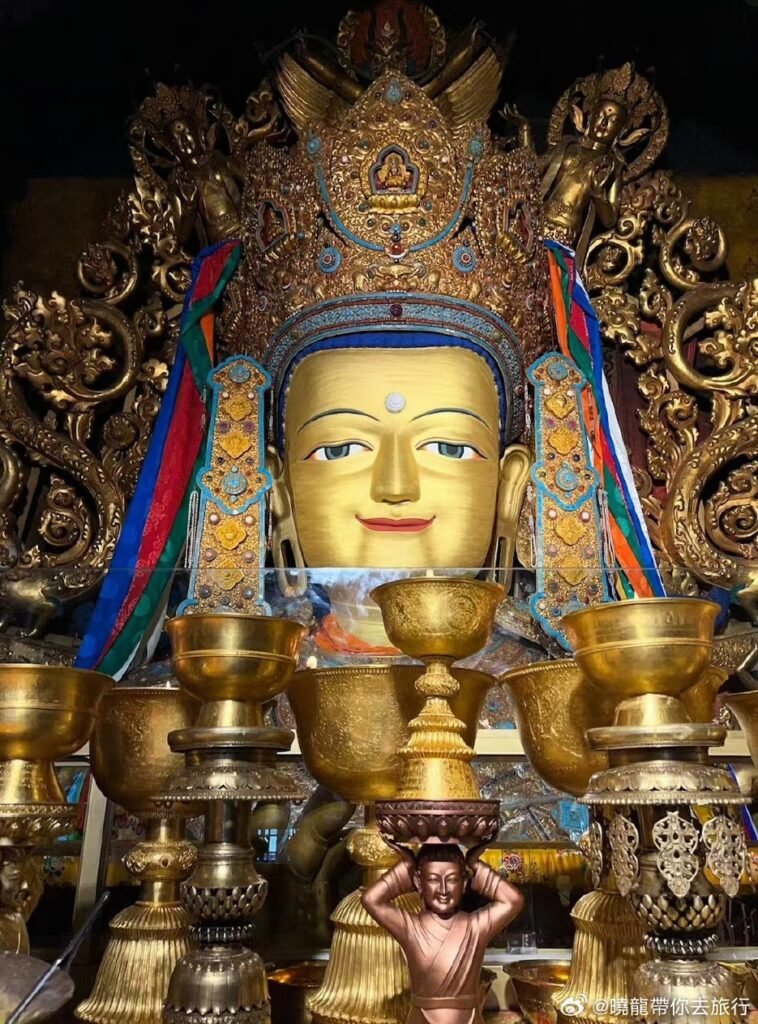Tibet, known for its rich culture and stunning landscapes, is also home to some of the most beautiful and unique precious stones. These stones are not only valued for their beauty but also for their cultural and spiritual significance. In this guide, we’ll explore the most popular precious stones found in Tibet, including their characteristics, cultural importance, and uses.

1. Turquoise: The Vibrant Blue Gem
What is Turquoise?
Turquoise is a bright blue-green stone that stands out for its striking color and unique veining. It’s one of Tibet’s most cherished gemstones, often used in jewelry and spiritual items.
Characteristics
Turquoise is known for its vibrant color, ranging from blue to green, and may have black or brown matrix patterns. This stone is prized for its beauty and is believed to bring protection, health, and good fortune.
Cultural Significance
In Tibetan culture, turquoise is considered sacred. It’s frequently used in religious artifacts and jewelry, symbolizing protection and spiritual strength.
2. Coral: The Symbol of Vitality
What is Coral?
Coral is an organic gemstone that comes in shades of red, pink, and orange. It is formed from the skeletons of marine corals and is highly valued in Tibetan tradition.
Characteristics
Coral is admired for its vibrant colors and is often used in traditional Tibetan jewelry and garments. Red coral, in particular, is believed to ward off evil and attract positive energy.
Cultural Significance
Coral holds a special place in Tibetan culture, symbolizing vitality and protection. It is often found in religious ornaments and is believed to enhance well-being and longevity.
3. Amber: The Golden Gem of Ancient Trees
What is Amber?
Amber is a fossilized tree resin that can range in color from golden yellow to deep red. It often contains ancient plant material or insects, making it a unique and intriguing gemstone.
Characteristics
Amber’s warm hues and organic nature make it a favorite in Tibetan jewelry and religious artifacts. Its historical significance and natural beauty contribute to its high value.
Cultural Significance
In Tibetan culture, amber is believed to have healing and purifying properties. It is used in various spiritual practices and is valued for its ability to bring peace and clarity.
4. Dzi Beads: Sacred Agate Talismans
What are Dzi Beads?
Dzi beads are unique agate stones with intricate patterns, often used as talismans in Tibetan culture. They are believed to have protective and spiritual powers.
Characteristics
Dzi beads feature distinctive patterns and are highly regarded for their supposed spiritual benefits. They are commonly worn as amulets to bring good fortune and protection.
Cultural Significance
Dzi beads are considered sacred in Tibetan culture. They are often used in prayer beads and jewelry, believed to enhance spiritual energy and offer protection against negative forces.
5. Quartz: The Clear and Smoky Stone
What is Quartz?
Quartz is a common mineral that comes in various forms, including clear and smoky varieties. It is often used in Tibetan spiritual practices.
Characteristics
Quartz is valued for its clarity and versatility. Clear quartz is known for its healing properties, while smoky quartz is used for grounding and protection.
Cultural Significance
In Tibet, quartz is used in meditation and spiritual rituals. It is believed to amplify energy and aid in spiritual growth, making it a popular choice for religious items.
6. Garnet: The Deep Red Gem
What is Garnet?
Garnet is a deep red gemstone that is valued for its rich color and durability. It is used in various Tibetan ornaments and jewelry.
Characteristics
Garnet’s deep red hue makes it a striking choice for jewelry. It is believed to symbolize strength and commitment, enhancing its appeal in Tibetan culture.
Cultural Significance
Garnet is considered a symbol of passion and energy in Tibetan culture. It is often used in religious artifacts and is thought to bring courage and vitality.
7. Lapis Lazuli: The Royal Blue Stone
What is Lapis Lazuli?
Lapis lazuli is a deep blue stone with gold flecks of pyrite. It has been prized since ancient times for its vivid color and spiritual significance.
Characteristics
Lapis lazuli’s intense blue color and golden flecks make it a stunning gemstone. It is associated with wisdom and spiritual insight, which enhances its value in Tibetan culture.
Cultural Significance
In Tibet, lapis lazuli is linked to spiritual enlightenment and divine favor. It is often used in religious art and ornaments, symbolizing royalty and spiritual power.
8. Jade: The Green Gem of Longevity
What is Jade?
Jade is a durable green gemstone, highly valued in Tibetan culture for its beauty and significance. Nephrite jade is particularly popular.
Characteristics
Jade’s green color and toughness make it a favored material for jewelry and religious artifacts. It is associated with longevity and health.
Cultural Significance
Jade is considered a symbol of purity and serenity in Tibetan culture. It is used in various spiritual and decorative items, believed to bring harmony and balance.
Conclusion
Tibet’s precious stones are not only beautiful but also carry deep cultural and spiritual significance. From the vibrant turquoise to the sacred dzi beads, each stone plays a unique role in Tibetan life and traditions. Whether you’re interested in their beauty or their cultural importance, these gemstones offer a fascinating glimpse into Tibetan heritage.

